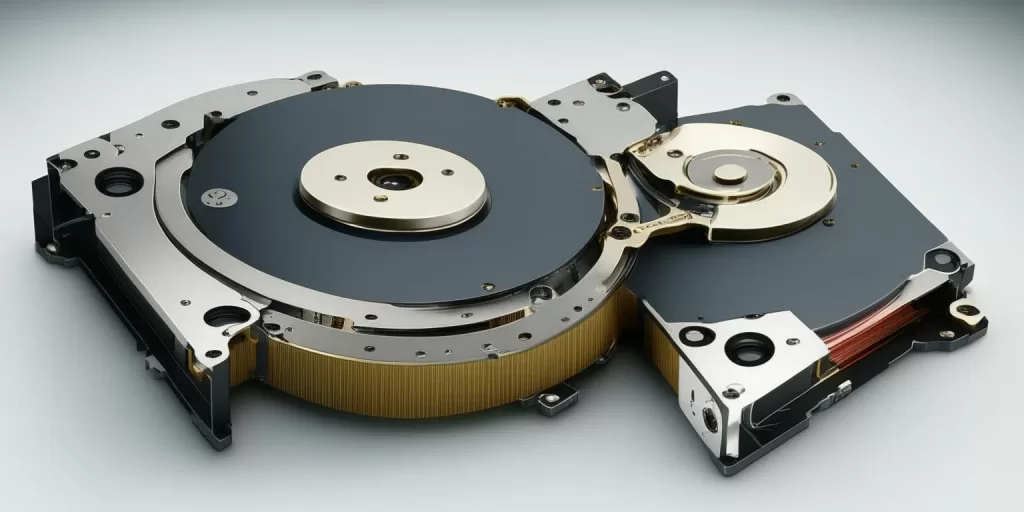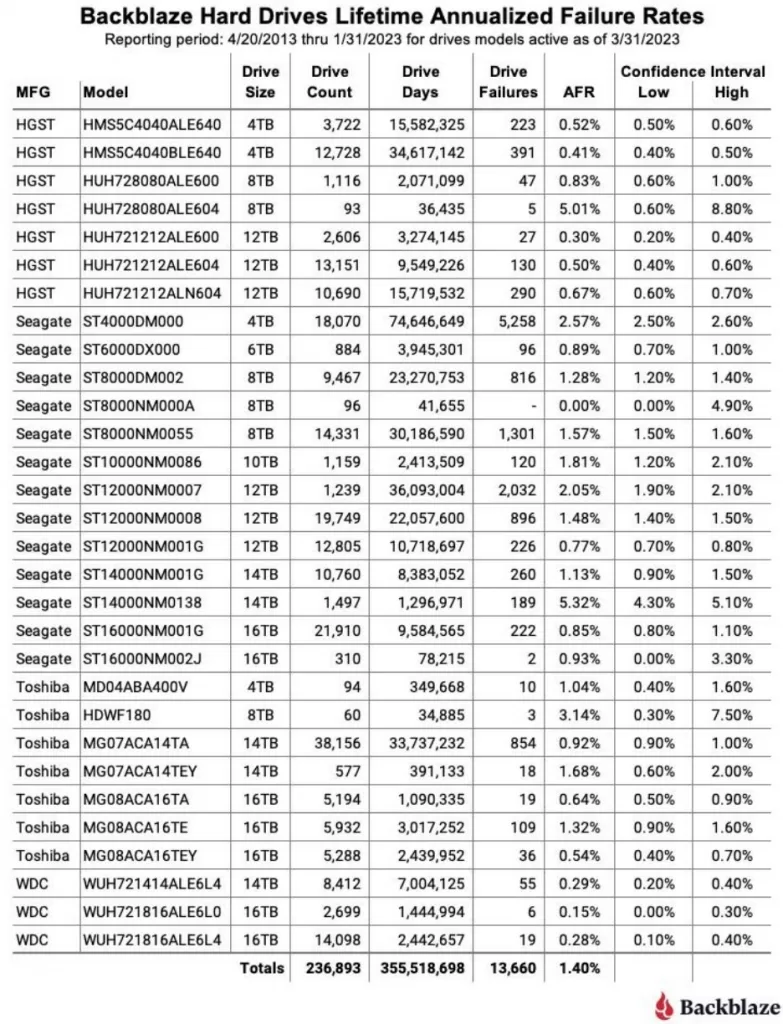The average age of hard disk failure is 2 years and 6 months
The American company Backblaze, specializing in backup and cloud storage, has published a detailed report examining 17,155 failed hard drives. The average age of refusal is 2 years and 6 months.
At the end of the first quarter of 2023, Backblaze used 241,678 hard drives (HDD) and solid-state drives (SSD) in its data centers around the world to store client data. Of these, 4,400 bootable (3,038 SSDs and 1,362 HDDs) were excluded from the report.
The company has been recording the date of failure of each disk, model, serial number, capacity and data SMART for many years. This time, 72 different models from 17,155 disks were studied.
Backblaze has reduced the number of models under consideration to 30, excluding disks with less than 50 failures from the statistics.
The table above shows that the Seagate ST12000NM0007 model with a capacity of 12 TB stands out with 2023 failures and an average disk age of 1 year and 6 months. The model Seagate ST400DM000 with a capacity of 4 TB has more failures: 5249 failures with an average age of the disk of 3 years and 3 months.
The researchers added new statistics to the total data for 10 years of observations. The table below shows the annual failure rate (AFR) for 236,893 hard drives of 30 models over almost 10 years of observations (385 disks used only for testing, as well as models with a small number of units, were excluded).
The average AFR was 1.4%. Drives with the lowest AFR (0.28%) and a total operating time of at least 2.2 million days are Western Digital Corporation (WDC) WUH721816ALE6L4 with a capacity of 16 TB (14,098 units available at Backblaze).
Models with the highest AFR (2.57%) and at least 2.2 million days of operation — Seagate ST4000DM000 with a capacity of 4 TB (18,070 units available from Backblaze). These models have the largest number of working days in the entire table.
It is interesting to note that Backblaze reported a more high failure rate for Seagate hard drives back in February of this year. However, the company also mentioned that these disks usually cost less, so their failure rate is usually not high enough to make them less cost-effective.
Thus obraTherefore, although some models of hard drives have a higher failure rate, cost and other factors also affect the overall profitability of using these drives in cloud storage and data centers.



You must be logged in to post a comment.